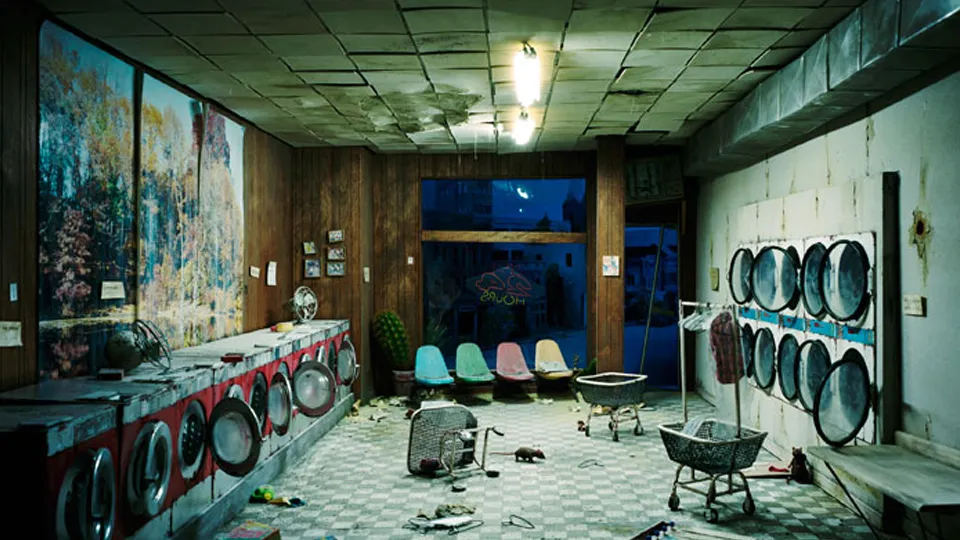Adventure calls to those who dare to explore the untamed corners of our planet. Nomadic clothing designed for harsh environments bridges the gap between survival necessity and modern style, empowering explorers to face extreme conditions with confidence.
🌍 The Evolution of Expedition-Ready Apparel
Throughout history, nomadic peoples have perfected the art of dressing for survival. From the reindeer-skin parkas of Arctic tribes to the breathable layers worn by desert wanderers, traditional clothing has always been about adaptation. Today’s adventurers benefit from this ancestral wisdom combined with cutting-edge textile technology.
Modern nomadic clothing represents a fusion of time-tested design principles and innovative materials. These garments must withstand freezing temperatures, torrential rains, scorching heat, and abrasive terrain while remaining lightweight enough for extended travel. The challenge lies in creating versatile pieces that perform across multiple climate zones without compromising mobility or comfort.
Contemporary expedition wear draws inspiration from various sources: mountaineering heritage, military tactical gear, and indigenous survival clothing. This convergence has produced a new category of apparel that refuses to choose between functionality and aesthetics. The modern adventurer no longer needs to sacrifice style for survival capability.
⛰️ Understanding Harsh Environment Challenges
Before selecting appropriate clothing, understanding the specific demands of extreme environments proves essential. Different terrains and climates present unique challenges that require targeted solutions.
Arctic and Alpine Conditions
Sub-zero temperatures demand exceptional insulation without bulk. Wind chill can lower effective temperatures by dozens of degrees, making wind resistance critical. Moisture management becomes paradoxically important even in frozen landscapes, as perspiration can lead to dangerous heat loss. Layering systems must accommodate dramatic activity-level changes, from strenuous climbing to stationary belaying.
Quality nomadic clothing for cold environments incorporates synthetic or down insulation with high fill-power ratings. Outer shells feature waterproof-breathable membranes that block wind while allowing vapor escape. Articulated cuts ensure full range of motion even when wearing multiple layers.
Desert and Arid Landscapes
Extreme heat and intense solar radiation create different challenges. Clothing must shield skin from UV damage while facilitating heat dissipation. Sand and dust resistance becomes paramount, as abrasive particles can quickly degrade inferior materials. Dramatic temperature swings between day and night require adaptable solutions.
Desert-optimized nomadic wear typically features lightweight, tightly-woven fabrics that block sand while remaining breathable. Light colors reflect solar radiation, while strategic ventilation zones enhance cooling. Many designs incorporate detachable components for temperature regulation throughout the day.
Tropical and Rainforest Environments
Humidity, persistent moisture, and dense vegetation demand specialized approaches. Fabrics must dry quickly, resist mildew, and protect against insects and leeches. Durability matters when pushing through thick undergrowth, while ventilation prevents dangerous overheating in humid conditions.
Tropical expedition clothing emphasizes quick-drying synthetics treated with antimicrobial and insect-repellent technologies. Reinforced areas withstand abrasion from vegetation, while mesh panels maximize airflow. Gaiters and sealed cuffs provide additional protection against insects and leeches.
🧥 Essential Features of Adventure-Ready Nomadic Clothing
Certain characteristics distinguish true expedition-grade clothing from ordinary outdoor wear. Understanding these features helps adventurers make informed choices when preparing for challenging journeys.
Advanced Fabric Technologies
Modern technical fabrics have revolutionized expedition clothing. Gore-Tex and similar waterproof-breathable membranes keep precipitation out while allowing perspiration vapor to escape. Synthetic insulations like PrimaLoft maintain warmth even when wet, unlike traditional down. Ripstop weaves prevent small tears from expanding into major failures.
Merino wool has experienced a renaissance in adventure wear due to its natural odor resistance, temperature regulation, and moisture-wicking properties. Many nomadic clothing lines now incorporate merino blends that combine natural fibers’ benefits with synthetic durability. These hybrid fabrics represent optimal solutions for extended expeditions where washing opportunities are limited.
Intelligent Design Elements
Thoughtful construction details separate exceptional nomadic clothing from mediocre alternatives. Articulated knees and elbows accommodate natural body movement without restriction. Reinforced high-wear zones extend garment lifespan in challenging conditions. Strategic pocket placement keeps essential items accessible without interfering with pack straps or climbing harnesses.
Adjustability features allow customization for different conditions and body types. Drawcord hems seal out drafts and precipitation. Pit zips provide rapid ventilation without removing layers. Velcro or snap closures on cuffs accommodate different glove types and activity levels.
Versatility and Modularity
Weight and volume constraints make versatility crucial for nomadic lifestyles. The best expedition clothing serves multiple purposes and adapts to changing conditions. Convertible pants transform into shorts for temperature regulation. Jackets feature removable insulating layers that function independently. Hoods detach when unnecessary, reducing weight and bulk.
This modular approach allows adventurers to carry fewer items while maintaining appropriate protection across diverse environments. A well-designed three-layer system can handle everything from alpine snow to desert heat with simple configuration changes.
👕 Building Your Adventure Wardrobe
Creating an effective expedition clothing system requires strategic selection based on anticipated conditions, activity levels, and journey duration. The following framework provides guidance for assembling a versatile adventure wardrobe.
The Layering Philosophy
Professional expeditioners rely on layering systems that provide flexibility across varying conditions. This approach consists of three primary layers, each serving specific functions:
- Base Layer: Worn against skin, this layer manages moisture by wicking perspiration away from the body. Merino wool or synthetic fabrics work best, while cotton should be avoided due to poor drying characteristics.
- Mid Layer: Provides primary insulation, trapping warm air near the body. Fleece, synthetic insulation, or down fill this role depending on expected conditions and moisture levels.
- Outer Layer: Shields against wind, rain, and snow while allowing moisture vapor to escape. This shell layer represents the primary defense against harsh environmental conditions.
Understanding this system allows adventurers to fine-tune their clothing throughout the day as activity levels and weather conditions change. Adding or removing layers prevents both overheating and dangerous heat loss.
Core Expedition Pieces
While specific needs vary by destination, certain items form the foundation of most adventure wardrobes. Investing in quality versions of these essentials ensures reliable performance when conditions turn challenging.
A premium hardshell jacket with waterproof-breathable membrane serves as the primary weather barrier. Look for fully taped seams, adjustable hoods that accommodate helmets, and sufficient length to cover the hips when reaching overhead. Quality zippers with storm flaps prevent moisture intrusion at vulnerable points.
Insulated mid-layers provide warmth during rest periods or cold conditions. Both synthetic-fill and down options have merit depending on expected moisture exposure. Synthetic insulation maintains warmth when wet but weighs more, while down offers superior warmth-to-weight ratios in dry conditions.
Technical pants designed for harsh environments feature reinforced knees, seat, and cuffs to withstand abrasion. Articulated construction and stretch fabrics allow natural movement during climbing or scrambling. Integrated gaiters seal boot tops against snow and debris entry.
🎒 Specialized Gear for Extreme Conditions
Certain environments demand additional specialized clothing items beyond standard layering systems. These pieces address unique challenges presented by specific terrains and climates.
Cold Weather Accessories
Extremities lose heat rapidly in freezing conditions, making proper hand, foot, and head protection essential. Insulated gloves should feature removable liners for versatility, with waterproof shells protecting against moisture. Many adventurers carry multiple glove systems ranging from lightweight liner gloves for dexterity to heavy mittens for extreme cold.
Balaclavas or insulated hats that cover ears prevent significant heat loss through the head. Neck gaiters or buffs provide versatile protection that adjusts for varying conditions. Quality expedition socks combine merino wool with synthetic reinforcements in high-wear areas.
Sun and Heat Protection
Desert and high-altitude environments require dedicated sun protection beyond standard clothing. Wide-brimmed hats with neck protection shield vulnerable areas from intense solar radiation. Sun sleeves and gloves prevent dangerous UV exposure during extended periods outdoors. Lightweight, breathable fabrics with high UPF ratings provide maximum protection without overheating.
💪 Durability and Maintenance in the Field
Even the highest-quality nomadic clothing requires proper care to maintain performance throughout extended expeditions. Understanding maintenance principles helps maximize gear lifespan and reliability.
Field Repair Essentials
Minor damage can escalate quickly in harsh environments without prompt attention. Carrying basic repair supplies allows adventurers to address problems before they become critical. Tenacious Tape or similar adhesive patches quickly seal tears in waterproof fabrics. Spare buttons, safety pins, and needle with thread handle common clothing failures.
Learning basic hand-sewing techniques enables field repairs that extend far beyond home. Whip-stitching prevents tears from expanding, while bar-tacking reinforces stress points. These skills prove invaluable when professional repairs aren’t accessible for weeks or months.
Cleaning and Care Strategies
Technical fabrics require specific care to maintain their performance characteristics. Waterproof-breathable membranes can lose effectiveness when contaminated with dirt, body oils, or improper detergents. Using specialized technical wash products preserves both water-repellency and breathability.
When washing opportunities are limited during expeditions, spot-cleaning high-soil areas extends time between full washes. Allowing clothing to air thoroughly between uses prevents odor buildup and bacterial growth. Merino wool’s natural antimicrobial properties make it especially well-suited for extended wear without washing.
🌟 Style Meets Function: Modern Nomadic Aesthetics
Contemporary expedition clothing rejects the false choice between functionality and appearance. Leading brands now create technically sophisticated pieces that transition seamlessly from wilderness to urban environments.
Earth-toned color palettes inspired by natural landscapes provide versatility across settings. Muted greens, browns, and grays avoid the garish colors of traditional outdoor gear while maintaining visual appeal. Strategic design elements create flattering silhouettes without compromising technical performance.
This aesthetic evolution reflects changing adventure demographics. Modern explorers expect clothing that performs during expeditions but doesn’t look out-of-place in civilized settings. Nomadic lifestyle adherents particularly appreciate this versatility, as they frequently transition between wilderness and urban environments.
🏔️ Sustainability Considerations in Adventure Gear
Environmental consciousness increasingly influences purchasing decisions among adventure enthusiasts. Many recognize the contradiction inherent in exploring wild places while purchasing products that harm those environments.
Progressive outdoor brands now prioritize sustainable materials and ethical manufacturing. Recycled polyester and nylon reduce petroleum dependence and plastic waste. Responsible down sourcing ensures ethical treatment of waterfowl. Fair-trade certifications guarantee equitable treatment of manufacturing workers.
Durability represents perhaps the most important sustainability factor. Clothing that lasts for years or decades reduces overall environmental impact far more than marginally “greener” products requiring frequent replacement. Investing in quality expedition-grade pieces ultimately proves both economically and environmentally sound.
🚀 Preparing for Your Next Adventure
Selecting appropriate nomadic clothing transforms expeditions from survival ordeals into enjoyable adventures. Proper gear allows focus on the journey rather than discomfort or safety concerns.
Begin by honestly assessing your planned destinations and activities. Research typical conditions, including temperature ranges, precipitation patterns, and terrain characteristics. Consult trip reports from others who’ve visited your target locations to understand real-world conditions beyond guidebook generalizations.
Test new clothing on shorter trips before committing to extended expeditions. This shakedown period reveals fit issues, performance limitations, and compatibility problems before they become critical. Make adjustments based on actual experience rather than theoretical assumptions.
Remember that no single clothing system works perfectly for every situation. Experienced adventurers continually refine their gear selections based on accumulated knowledge and changing needs. View your adventure wardrobe as an evolving system rather than a one-time purchase.
🌈 Embracing the Nomadic Spirit
Quality expedition clothing represents more than practical necessity—it embodies the adventurous spirit driving exploration. Each carefully selected piece reflects commitment to experiencing our planet’s most challenging and beautiful environments.
The investment in proper nomadic clothing pays dividends in expanded capabilities and enhanced experiences. Appropriate gear enables ventures into territories that would otherwise remain inaccessible. Confidence in your equipment allows full engagement with surroundings rather than constant worry about survival.
Whether tackling alpine peaks, crossing remote deserts, or exploring tropical jungles, the right clothing transforms harsh environments from enemies into arenas for personal growth and discovery. Modern expedition wear combines ancestral wisdom with contemporary innovation, providing unprecedented capability to those who hear adventure’s call.
Your next expedition awaits. With proper preparation and quality nomadic clothing designed for harsh environments, you’re ready to face whatever challenges the wilderness presents. Gear up, step forward, and unleash your adventurous spirit upon the world’s wild places. The journey of a lifetime begins with a single well-prepared step into the unknown.
Toni Santos is a visual explorer and microscopic storyteller who delves into the hidden aesthetics of microbial life. Through a fusion of scientific curiosity and artistic insight, Toni transforms the overlooked world of bacteria, fungi, and cellular forms into mesmerizing visual narratives—revealing the elegance, symmetry, and chaos that thrive at microscopic scales.
Rooted in a fascination with life forms too small to see yet too intricate to ignore, Toni’s work captures the bizarre beauty of microbial colonies, biofilms, and spore patterns. These images aren’t just representations—they are celebrations of the artistic intelligence encoded in nature’s tiniest architects.
With a background in visual design and bio-inspiration, Toni merges scientific imaging techniques with creative expression, transforming petri dish cultures, fluorescence microscopy, and microbial textures into works that provoke both wonder and contemplation.
As the creative force behind Vizovex, Toni offers curated visual studies, microbial-inspired designs, and essays that bridge art and microbiology—inviting viewers to reimagine what beauty means at the edge of perception.
His work is a tribute to:
The hidden geometries of living systems
The surprising elegance of microbial growth
The role of micro-life in shaping visual culture
Whether you’re a scientist, artist, or simply curious about the unseen world that sustains us, Toni opens a window into a universe where life writes poetry in colonies and patterns, one microbe, one frame, one breathtaking detail at a time.





